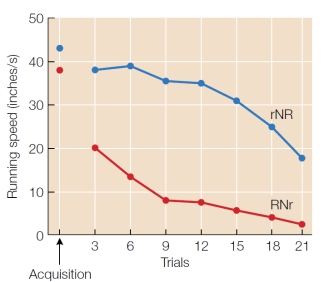Essay
In the experiment whose results are shown below, animals received rewards for running in a runway. In three-trial sequences they received a small reward, no reward, and a big reward (rNR), or they received the same trials with the two rewards switched (RNr). As shown in the figure, the rNR condition showed a greater PREE effect (was more resistant to extinction). This result supports sequential theory because in the rNR condition a big reward is associated with a preceding N trial, whereas a small reward is associated with the preceding N trial in the RNr condition. Evaluate whether this result can be explained by the frustration hypothesis.

Correct Answer:

Verified
N on rNR trials should be less frustrati...View Answer
Unlock this answer now
Get Access to more Verified Answers free of charge
Correct Answer:
Verified
View Answer
Unlock this answer now
Get Access to more Verified Answers free of charge
Q1: Which behavior is based on an acquired
Q2: Learning theorists assume that behavior is inherently
Q3: According to Hull, _ is influenced by
Q5: Hull's equation D × H × K
Q6: According to Hull's formulation of factors affecting
Q7: The partial reinforcement extinction effect<br>A) is more
Q8: Acquired motivation refers to<br>A) learning to expect
Q9: A motivational perspective assumes that behavior will
Q10: A "revolution" occurred in animal learning in
Q11: Rewards are most likely to have a